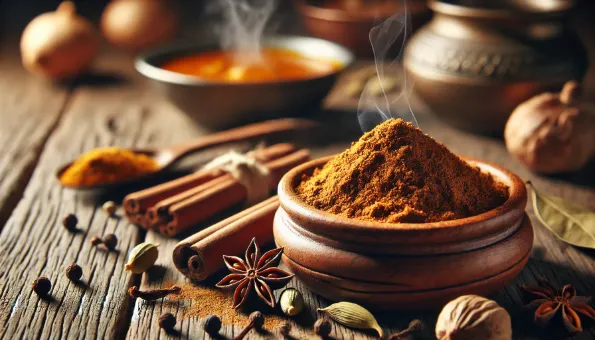Garam Masala: Nutrition, Benefits and Uses
Garam masala is an aromatic spice blend from India, known for its rich flavor and potential health benefits.

Introduction
Garam masala is a traditional Indian spice blend typically containing cardamom, cinnamon, cloves, cumin, coriander, black pepper, and nutmeg. It is used to add warmth and depth of flavor to various dishes.
Nutritional Values
The nutritional profile depends on the spices used, but garam masala contains **antioxidants**, **vitamins** (such as A and C), minerals like iron and calcium, and phytochemicals with anti-inflammatory effects.
Benefits
- **Improves digestion** by stimulating digestive enzymes
- **Supports circulation** thanks to spices that boost blood flow
- **Antioxidant effects** help protect cells
- May help in **regulating blood sugar**
Possible Drawbacks
- Overconsumption may cause **heartburn** or stomach irritation
- Some spices may be strong for sensitive stomachs
- Possible allergic reactions to certain spices
Culinary Uses
Garam masala is added to dishes like curries, stews, rice dishes, and marinades, usually towards the end of cooking to preserve aroma.
Fun Fact
The word 'garam' means 'warm' or 'hot' in Hindi, referring to the warming effect on the body rather than spiciness.
- 1. Garam Masala
garam masala

